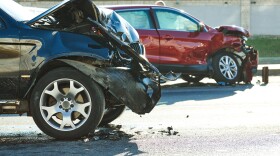Road rage is more common than ever, according to new research from the AAA Foundation for Traffic Safety. The study found that 96% of drivers admit to sometimes driving aggressively in the past year.
The AAA Foundation is a non-profit organization that focuses on preventing traffic deaths and injuries through research and promotion of public safety. The nationwide study was conducted in three parts. It involved a review by academic experts, followed by focus group discussions and a thematic analysis of the data. The final segment included a questionnaire that was given to over 3,000 drivers across the country.
According to AAA, the more people encounter road rage, the more likely they are to respond in turn, creating a cycle of increasing hostility. Tailgating, honking, speeding, cutting cars off, and rude gestures and words are common examples of aggressive driving.
“Driving often turns into a high-stress experience, not just because others drive recklessly, but because we react in the moment,” said Adrienne Woodland, a spokeswoman for AAA The Auto Club Group. “Our research shows that even the calmest drivers can get drawn into road rage after a single hostile encounter.”
Angry drivers are more likely to be individuals under 60 with household incomes of $100,000 or more. Woodland said that men are more likely to escalate unsafe driving behaviors, and those who drive sports cars, big trucks, and motorcycles are often seen as more aggressive.
Since 2016, cutting off other cars was is up 67% and angry honking is up 47%. But tailgating has decreased by 24% while yelling at other drivers is down 17%.
Woodland said that road rage remains a problem for drivers. According to their research, 11% of drivers even admitted to intentionally engaging in violent actions such as bumping into another car or confronting another driver.
When encountering an aggressive driver, Woodland said to avoid direct eye contact and give space to the other car. Do not drive directly home and call 911 if you feel your safety is in immediate risk.
“You know, good etiquette and being courteous to other drivers are the most effective ways to reduce aggressive driving and road rage,” she added. “Small gestures like using turn signals, letting others merge, and offering a friendly wave can go a long way.”




